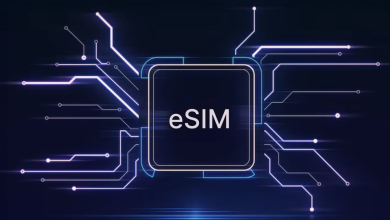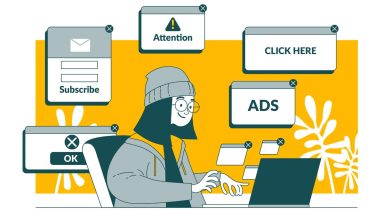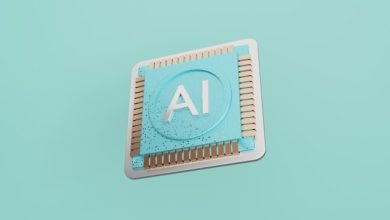
AI didn’t arrive with a bang. It slipped in through side doors: automating tickets, rewriting code, flagging problems in regulatory reports. It’s slowly becoming part of how many companies operate.
I lead a company that has worked on software development for the fintech and life sciences industries for years. Today, about half of our clients have shifted almost all of their systems to include AI. The other half? They don’t want AI anywhere near their highly-protected data.
Regardless of each client’s stance, we’re training every member of our company to stay current with AI and maintain competitive skills. Internally, we’ve restructured most of our processes to include tools that help us work faster and serve clients better.
Here’s what that transformation looks like, up close, from where we stand:
1. AI is replacing whole workflows, not just individual tasks
The early AI story was all about tasks: automate this step, summarize that file, generate a better subject line. But the companies seeing real results are going further: rebuilding entire workflows.
For example:
- A fintech client rewired their risk analysis to use AI for screening transaction problems up front. What was once a reactive step now happens when data comes in, with audit trails generated automatically and sent to human reviewers only when needed.
- In biotech, we’ve seen AI integrated into clinical documentation, reducing review cycles by over 40%. Not by writing the documents, but by organizing, comparing and checking entries against current regulatory requirements.
This isn’t about doing the same work faster. It’s about doing different work—because the process itself has changed.
2. Teams are being built around AI capabilities
Another trend we’re seeing: companies are quietly redesigning teams to work with AI from the ground up.
It’s subtle, but significant:
- Job descriptions now assume you know how to work with AI models
- Engineers are paired with people who specialize in tuning AI behavior, not just code
- Human–AI collaboration is planned into team structure, not just added later
In one biotech firm, the data science team split into two groups: one focused on data preparation and quality, the other on training and evaluating AI models. The result wasn’t just better models, but less friction between teams and clearer responsibility for AI results.
The takeaway? AI isn’t just a tool you learn. It’s a capability you design teams around.
3. A simple framework: Process – People – Priorities
For companies unsure where to begin, we use a diagnostic approach we call the 3P Framework:
- Process: Which workflows are rules-based, repeatable, and high-volume? Start there.
- People: Who’s already experimenting? Support them. Don’t centralize everything too early.
- Priorities: Where would a 20% improvement in speed or accuracy actually matter?
This keeps things practical. Not every AI experiment needs to scale. Some are simply learning exercises. But the ones that align with the 3Ps tend to stick.
4. Compliance is changing quietly
In heavily regulated sectors (99% of our clients) AI is changing compliance work. Not by “solving” it, but by making it ongoing, trackable and spread throughout operations.
- A payments company we support used to conduct quarterly compliance audits manually. Now, AI reviews logs daily and surfaces problems in real time.
- In healthtech, AI tools help generate FDA submission documentation, cross-referencing internal data and regulatory guidelines to flag incomplete or inconsistent sections.
These are small shifts with big implications. When compliance becomes an ongoing process instead of a checkpoint, it shifts from being a bottleneck to running quietly in the background.
And crucially: this evolution is happening without reducing human oversight. The best systems improve visibility and flag uncertainty, keeping humans involved without slowing them down.
5. Beyond the hype: what clients actually want
We don’t get asked to “build an AI strategy.” We get questions like:
- Can we cut onboarding time for new hires in half?
- Can we improve first-response accuracy in support tickets?
- Can we create a knowledge assistant trained on our internal documentation?
These are operational problems with AI as the solution, not the focus.
And notably, companies aren’t asking for more tools or dashboards. They’re asking for fewer—just ones that adapt better and integrate more smoothly.
That’s a healthy sign. We’re leaving the era of AI for its own sake and entering one of practical applications.
6. Risks worth naming
Every transformation has trade-offs. The most common risks we help clients navigate:
- Over-automation: Replacing human judgment with rigid rules can backfire, especially in areas like customer service or legal review.
- Model drift: AI systems that aren’t actively monitored can get worse over time or lose relevance.
- Lack of documentation: Some teams are starting to treat AI as a black box, which becomes a problem during audits or compliance checks.
The companies doing this well build oversight into their process from the start. They track changes to AI prompts. They run test cases. They train their people to question the model’s confidence.
7. What’s next: AI that just works
Looking ahead, we expect AI to become less visible but far more embedded.
You won’t “open the AI dashboard.” You’ll open your system and it will know your context, anticipate your next step, or quietly improve what you’re doing in the background.
The best implementations are often the ones no one talks about. Because they just work.
And for companies willing to rebuild (not just add on) that future is already here.





